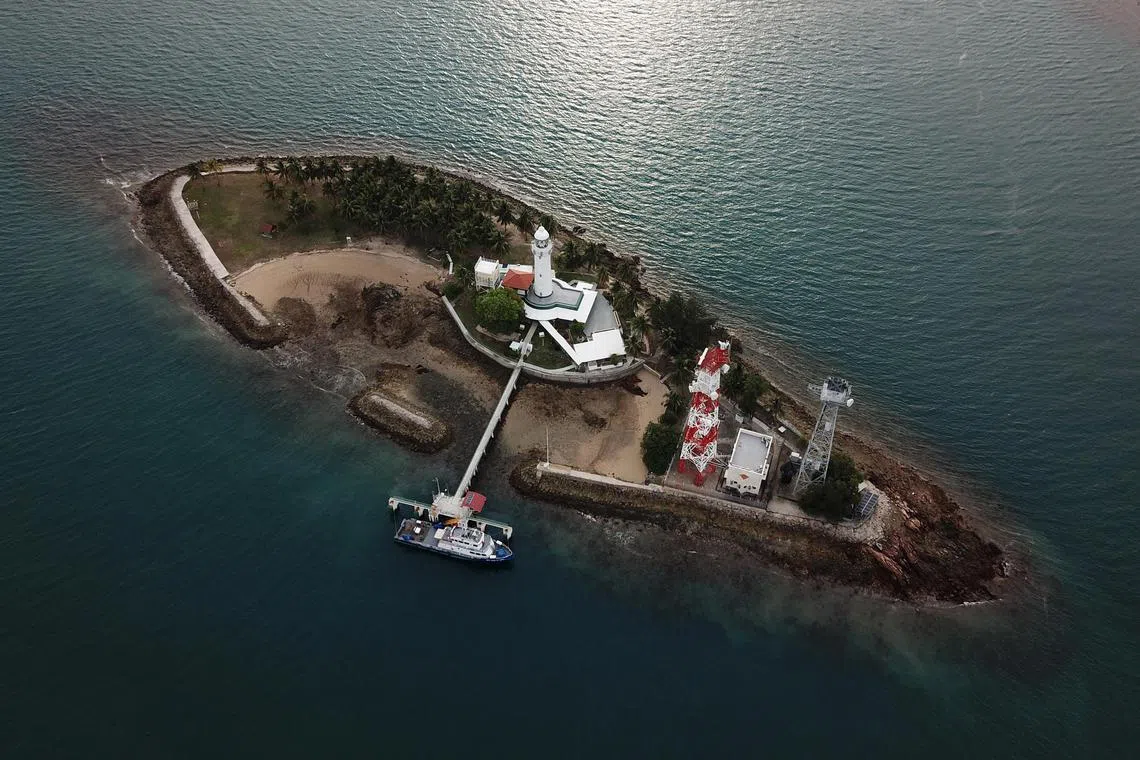Raffles Lighthouse could be powered entirely by solar, tidal wave energy
Sign up now: Get ST's newsletters delivered to your inbox

The solar and tidal energy projects can replace the current use of diesel generators on the offshore island.
PHOTO: ST FILE
Follow topic:
SINGAPORE – Raffles Lighthouse located on Pulau Satumu and operational equipment such as radar towers on the southern island could soon be powered entirely by renewable energy.
The Straits Times has learnt that the Maritime and Port Authority of Singapore (MPA) is looking to generate more than 1.2 gigawatt hours of electricity per annum on the island from solar energy, using solar panels and energy storage systems to manage solar intermittency.
The electricity generated is enough to power about 300 four-room Housing Board flats for a year.
MPA is looking to roll out the solar panel system in 2024.
The solar energy will be complemented with a potential supply of up to 2,700 kilowatt hours of electricity from ongoing trials involving tidal energy, allowing enough green energy to power both the lighthouse and other operational equipment on the island, said MPA.
This includes navigational aid systems such as radar and telecommunication towers.
Since April, MPA has been conducting trials
The testing of the four tidal turbines has been successfully completed, and works are now in progress to lay cables for the transmission of electricity to the island, said MPA.
The solar and tidal energy projects can replace the current use of diesel generators on the offshore island.
“The ability to generate electricity from these renewable sources could also make Pulau Satumu a potential location for electric harbour craft charging,” said an MPA spokesman.
The Ministry of Transport has said that from 2030, all harbour craft operating at the Port of Singapore have to be fully electric, capable of using B100 biofuel or compatible with net-zero fuels such as hydrogen.
MPA has called for a tender to conduct an environmental impact assessment on the island, as well as to develop a conceptual design for the installation of the solar panel system, energy storage system and a power management system.
The agency is eyeing a vacant site on the southern part of the island for the installation of these systems. The site consists mainly of coconut trees, and marine wildlife including sea turtles have been observed occasionally.
The spokesman said the solar project “will not pose an impact” on coral reefs and is part of the agency’s broader efforts to digitalise and decarbonise the maritime sector.
Previously, a tender for a fish farm site to be located in the waters around Pulau Satumu was delayed after concerns about its potential impact on the area’s pristine coral reefs.
While tidal turbines are deployed in areas with fast-flowing waters, Bluenergy Solutions chief technology officer Stuart Baird had previously told ST that the company’s tidal turbines can convert energy from slower currents and streams flowing from 0.6m per second upwards, which is about 2kmh.
The turbines’ bidirectional design also enables them to harvest energy from both the rise and fall of tides, he added.
In an update, a Bluenergy Solutions spokesman told ST that the Pulau Satumu trial has been successful to date, and the company has recently commenced a project using the tidal turbines below the Sentosa Boardwalk.
When asked for more details, Resorts World Singapore and Sentosa Development Corporation declined to comment further.


